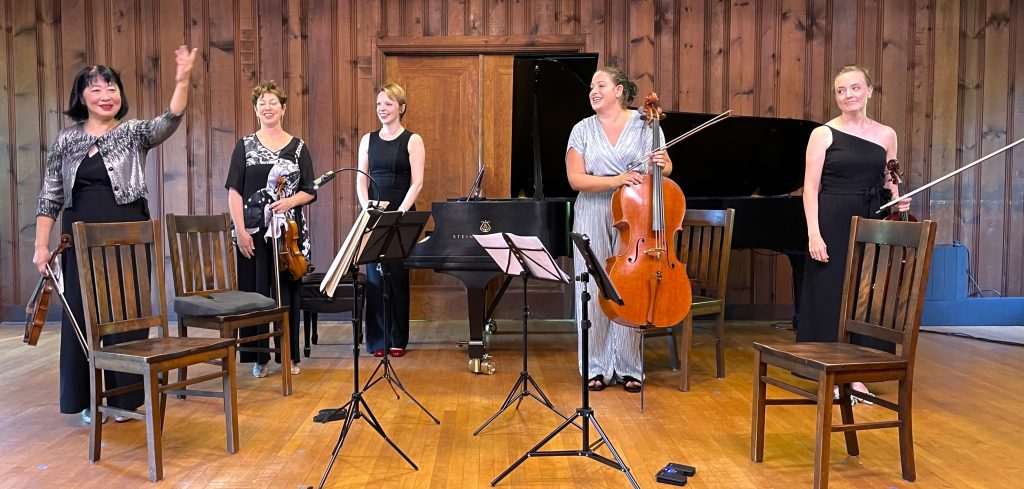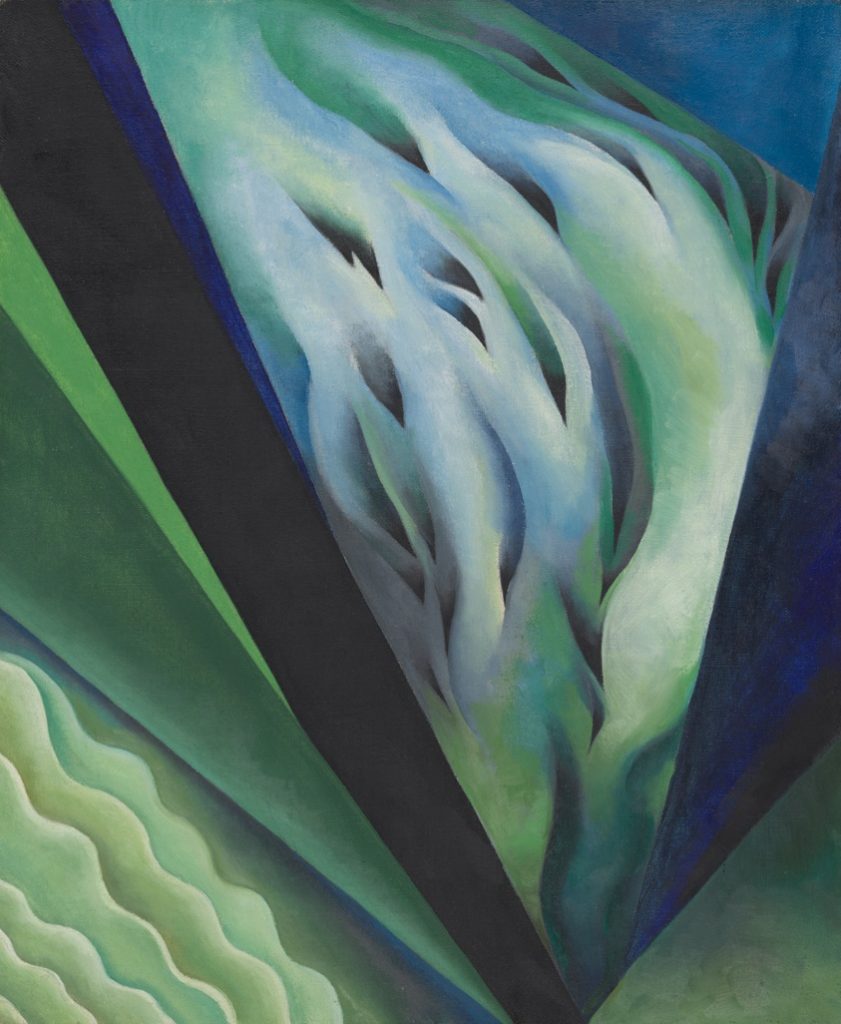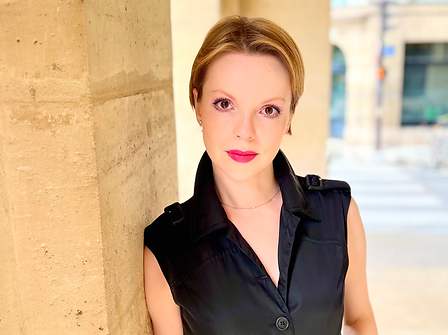
Last Sunday under diamond blue skies at Music Mountain the all-female Cassatt Quartet closed out the season at Gordon Hall, yet Director Oskar Espina-Ruiz promised a new forthcoming music event in November. There was a wonderful pre-concert talk by biographer Roxana Robinson and composer Victoria Bond on the great American artist Georgia O’Keeffe which was related to the second musical playlist.
String Quartet in F Major, Op. 18/1 (c. 1799) is considered the first important work by Ludwig van Beethoven (1770-1827) who never dreamed that an all-woman quartet would ever be playing this or any of his compositions. As a student of Haydn and admirer of the Mozart legend, Beethoven’s ambition focused on developing his distinctive voice and eccentricity. This early series of six quartets indicated that he was not out to please Haydn but to impress Haydn, although Haydn had just completed one of his greatest quartets. For the F Major, the Viennese composer Emanuel Aloys Fӧrster assisted Beethoven with his revision. The series of the six quartets are all interesting, yet the F major stands out as the strongest achievement.
The sunny, arresting Allegro opening is a nod to Haydn, as well as a declaration of Beethoven’s new identity. In the Adagio, first violinist Muneko Otani delivered a higher, piercing identity, proclaiming a feminist interpretation of the work while violist Emily Brandenburg offered a midway path between the sexes. Gwen Krosnick on cello painted a more traditional masculine sound while Jennifer Leshnower on second violin supported Otani. I thought that the foregrounded tension of identity created a question about Beethoven’s own sexual identity and his awkward, unsuccessful advances to various women during his lifetime. The strong first violin line of confident masculinity was transformed into asking questions. This new interpretation was interesting, yet traditionalists may not have been on board to agree.
In the Scherzo, Gwen Krosnick on cello was superb, outstanding. The concluding Allegro was performed with impressive, awesome unity, yet this question of the work’s sexual identity was forcefully highlighted as if to assert that female identity was more balanced than unthinking male imposition.

Blue and Green Music (2020) by Victoria Bond was a most welcome treat. Bond was given a commission to compose concert music on Georgia O’Keeffe’s paintings. At first, she thought a quartet would describe four paintings in four different movements, yet the more she studied O’Keeffe’s Blue and Green painting in the Chicago Museum of Art, she fell in love with O’Keeffe’s Blue and Green painting and constructed her quartet around this single painting.

The first movement, Blue and Green, centers on the interplay of the two colors. Bond realized that O’Keeffe’s paintings are full of music partly because she could not sing as a vocalist (which she would have liked to do) yet she could sing in her paintings. The first movement appeared abstractly to describe male sexuality as blue and female sexuality as green and how the interplay of sexes raised questions about what each sex was asking of the other with results that were not completely acceptable to either sex.

The second movement, Green, marked what the female sex wanted in terms of men’s temperaments, while the third movement, Blue, described what men were interested in; here the music had a mellow blue blues atmosphere that delineated disappointment that men did not understand women. The fourth movement, Dancing Colors, celebrated the rare event when both sexes were on the same page in happy consanguinity. I was thunderstruck by this eloquent, strikingly beautiful, magnificently original work. When you are certain that you want to hear a musical composition again, then you know that you have encountered a masterpiece!

Piano Quintet in F Minor, Op. 34 (1864) by Johannes Brahms (1833-1897) opens with an inviting unity in F, yet the displacement of the downbeat for long periods offers metric disorientation which verges on a free-form flow that produces intensity. The second nocturnal movement offers a dreamy sweetness as if it were a refuge from emotional turmoil. The rather demonic Scherzo creates much anxiety as if it were a nightmare, yet it modulates to triumphant sanity with dawn awakening.

The tightly strung Finale incorporates elements of the first three movements while it returns to a happy celebration of the F melody. While an explosive Finale sums up the work in extravagant fireworks, one feels that the arrived solution is a bold public façade for something hidden, undisclosed, perhaps his frustration that Clara Schumann never married him.
The Cassatt Quartet played with such fierce unity that the unity nearly felt like abandon. Guest pianist Magdalena Baczewska was formidable at the rhythmic keys and pedal modulation which welded the strings in marvelous unison.
What a rousing conclusion for a whole summer’s music schedule!
